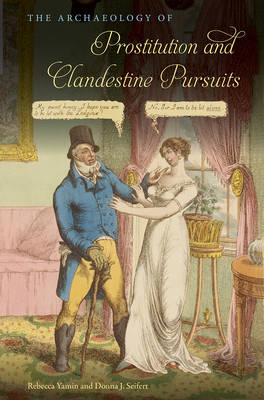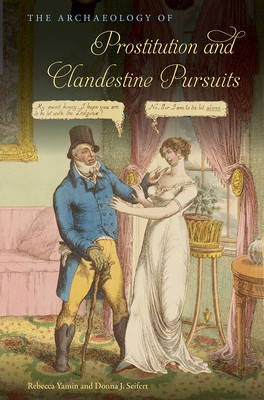
- Retrait gratuit dans votre magasin Club
- 7.000.000 titres dans notre catalogue
- Payer en toute sécurité
- Toujours un magasin près de chez vous
- Retrait gratuit dans votre magasin Club
- 7.000.000 titres dans notre catalogue
- Payer en toute sécurité
- Toujours un magasin près de chez vous
Description
Case studies of nineteenth-century sites from New York City to the
American West
The Archaeology of Prostitution and Clandestine Pursuits synthesizes
case studies from various nineteenth-century sites where material culture
reveals evidence of prostitution, including a brothel in Five Points--New York
City's most notorious neighborhood--and parlor houses a few blocks from the
White House and Capitol Hill. Rebecca Yamin and Donna Seifert also examine
brothels in the American West--in urban Los Angeles and in frontier sites and
mining camps in Sandpoint, Idaho; Prescott, Arizona; and Fargo, North Dakota.
The artifact assemblages found at these sites often contradict written records,
allowing archaeologists to construct a more realistic and complicated picture
of daily life for working-class women involved in commercial sex.
Recognizing
the agency involved in practicing a profession that has never been considered
respectable, even when it wasn't outright illegal, Yamin and Seifert also look
at the agency of other individuals who participated in illicit activities,
defying society privately or even publicly. The authors demonstrate the various
ways disempowered groups including immigrants, African Americans, women, and
the poor wielded autonomy while constrained by cultural norms. They also
consider similar, contemporary expressions of agency, with particular attention
to ongoing arguments surrounding the legalization of prostitution. Juxtaposing
today's debates alongside the clandestine pursuits of the past reveals how
dominant moral standards determine what individual choices are publicly
permissible.
A
volume in the series the American Experience in Archaeological Perspective,
edited by Michael S. Nassaney
Publication of the paperback edition made possible by a Sustaining
the Humanities through the American Rescue Plan grant from the National
Endowment for the Humanities.
Spécifications
Parties prenantes
- Auteur(s) :
- Editeur:
Contenu
- Nombre de pages :
- 208
- Langue:
- Anglais
- Collection :
Caractéristiques
- EAN:
- 9780813056456
- Date de parution :
- 06-08-19
- Format:
- Livre relié
- Format numérique:
- Genaaid
- Dimensions :
- 152 mm x 229 mm
- Poids :
- 444 g







